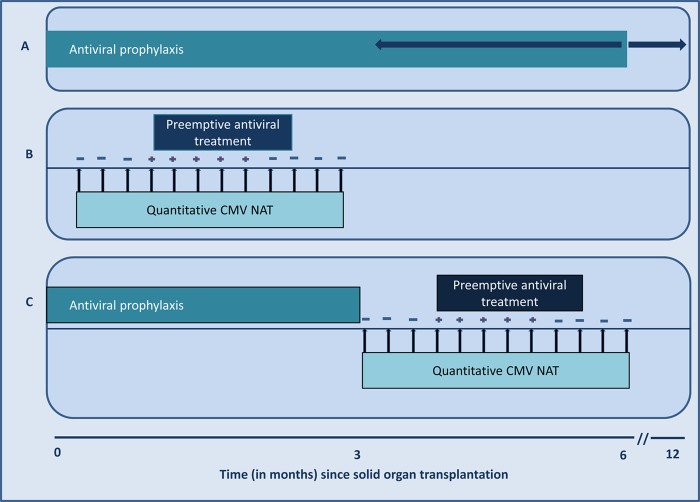Fig 1.
Strategies for prevention of cytomegalovirus disease in transplant recipients. (A) Antiviral prophylaxis. An antiviral drug, most commonly valganciclovir, is given to all at-risk patients for a defined period after transplantation. In general, the duration is 3 to 6 months, although it can be shortened (backward arrow) or prolonged (forward arrow) depending on the risk profile. (B) Preemptive therapy. This strategy entails routine cytomegalovirus surveillance by nucleic acid testing (often on a weekly basis, as indicated by arrows). Upon detection of a positive viral load threshold, antiviral treatment is initiated and continued until the viral level falls below the clinically relevant threshold. Viral load monitoring for patients is usually conducted during the first 3 months after transplantation. (C) Hybrid approach, wherein antiviral prophylaxis is followed by a preemptive strategy. This is an approach to reduce the incidence of late-onset cytomegalovirus disease in high-risk transplant patients who start off with antiviral prophylaxis as the primary method of cytomegalovirus prevention.

